<Back to Index>
- Commander of I Allied Corps William II of the Netherlands, 1792
- Commander of G Troop Royal Horse Artillery Alexander Cavalié Mercer, 1783
- Commander of VIII Prussian Corps August Wilhelm Antonius Graf Neidhardt von Gneisenau, 1760
PAGE SPONSOR
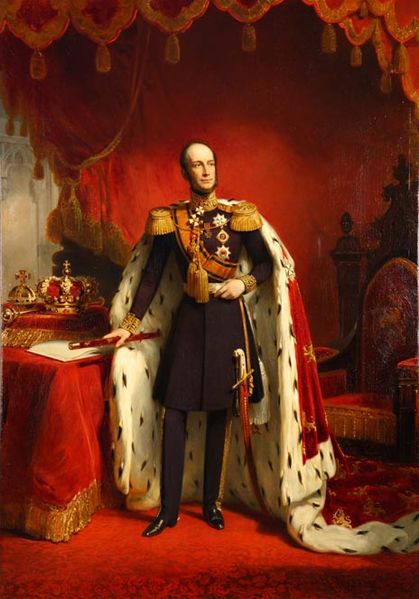
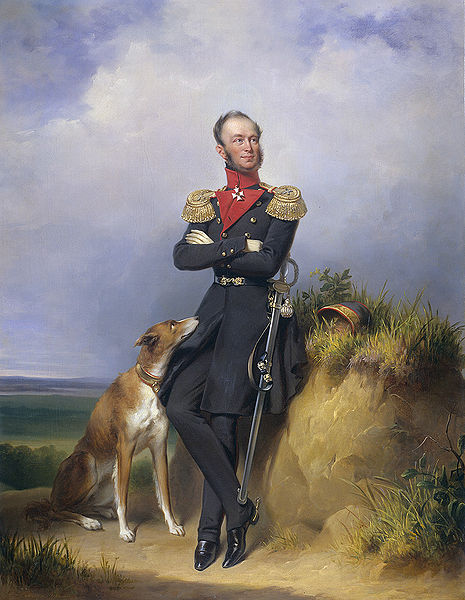
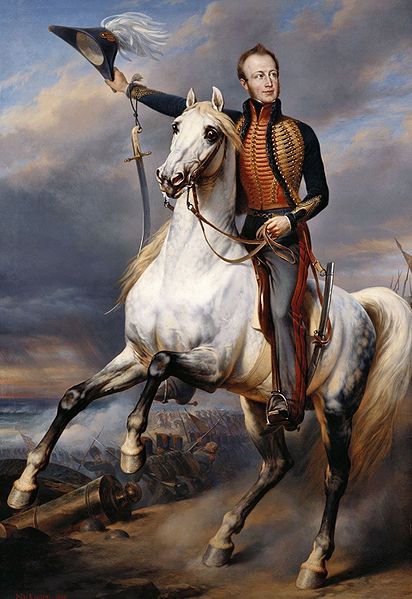
William II (Willem Frederik George Lodewijk van Oranje - Nassau) (6 December 1792 – 17 March 1849) was King of the Netherlands, Grand Duke of Luxembourg, and Duke of Limburg from 7 October 1840 until his death in 1849.
Willem Frederik George Lodewijk was born on 6 December 1792 in The Hague. He was the eldest son of King William I of the Netherlands and Wilhelmine of Prussia. His maternal grandparents were King Frederick William II of Prussia and his second wife Frederika Louisa of Hesse - Darmstadt.
When William was three he and his family fled to England after allied
British - Hanoverian troops left the Republic and entering French
troops
joined the anti - orangist Patriots. William spent his youth in Berlin
at the Prussian court. There he followed a military education and served
in the Prussian army. Afterwards he studied at the University of
Oxford.
He entered the British Army, and in 1811, as aide - de - camp to Arthur Wellesley, 1st Duke of Wellington, took part in several campaigns of the Peninsular War. He was made Lieutenant Colonel in the British Army on 11 June 1811 and Colonel on 21 October that year. On 8 September 1812 he was made an Aide - de - Camp to the Prince Regent and on 14 December 1813 promoted Major General. He returned to the Netherlands in 1813 when his father became king.
In 1815, William became crown prince and he took service in the army when Napoleon I of France
escaped from Elba. He fought as commander of I Allied Corps at the
Battle of Quatre Bras (16 June 1815) and the Battle of Waterloo (18 June
1815), where he was wounded.
In 1814, William became briefly engaged with Princess Charlotte of Wales, only daughter of the Prince Regent, later George IV of the United Kingdom and his estranged wife Caroline of Brunswick. The engagement was arranged by the Prince Regent, but it was broken because Charlotte's mother was against the marriage and because Charlotte did not want to move to The Netherlands. On 21 February 1816 at the Chapel of the Winter Palace in St. Petersburg, William married Grand Duchess Anna Pavlovna of Russia, youngest sister to Czar Alexander I of Russia, who arranged the marriage to seal the good relations between Imperial Russia and the Netherlands.
On 17 February 1817 in Brussels, his first son Willem Alexander was born, the future King William III. Because he lived in Brussels, he became affiliated with the Southern industrials.
In 1819, he was blackmailed over what Minister of Justice
Van Maanen termed in a letter his "shameful and unnatural lusts":
presumably bisexuality. He may also have had a relationship with a dandy
by the name of Pereira.
William II enjoyed considerable popularity in what is now Belgium (then the Southern Netherlands), as well as in the Netherlands for his affability and moderation, and in 1830, on the outbreak of the Belgian revolution, he did his utmost in Brussels as a peace broker, to bring about a settlement based on administrative autonomy for the southern provinces, under the House of Orange - Nassau. His father then rejected the terms of accommodation that he had proposed; afterwards, relations with his father were tense.
In April 1831, William II was military leader of the Ten days campaign
in Belgium which was driven back to the North by French intervention.
European intervention established Leopold of Saxe - Gotha on the new
throne of Belgium. Peace was finally established between Belgium and the
Netherlands in 1839.
On 7 October 1840, on his father's abdication, he acceded the throne as William II. Like his father he was conservative and less likely to initiate changes. He intervened less in policies than his father did. There was increased agitation for broad constitutional reform and a wider electoral franchise. And though he was personally conservative and no democrat, he acted with sense and moderation.
The Revolutions of 1848 broke out all over Europe. In Paris the Bourbon - Orléans monarchy fell. William became afraid of revolution in Amsterdam. One morning he woke up and said: "I changed from conservative to liberal in one night". He gave orders to Johan Rudolf Thorbecke to create a new constitution which included that the Eerste Kamer (Senate) would be elected indirectly by the Provincial States and that the Tweede Kamer (House of Representatives) would be elected directly. Electoral system changed into census suffrage in electoral districts (in 1917 census suffrage was replaced by common suffrage for all men, and districts were replaced by party lists of different political parties), whereby royal power decreased sharply. That constitution is still in effect today.
He swore in the first parliamentary cabinet a few months before his sudden death in Tilburg, North Brabant (1849).
He was the 869th Knight of the Order of the Golden Fleece in Spain.
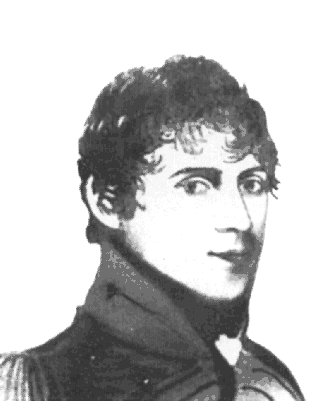
Alexander Cavalié Mercer (28 March 1783 – 9 November 1868) was a British artillery officer. Although he rose to the rank of general, his fame is as commander of G Troop Royal Horse Artillery in the thick of the fighting at the Battle of Waterloo, and as author of Journal of the Waterloo Campaign.
Mercer's six gun horse artillery troop arrived too late for the Battle of Quatre Bras, but it fought with the cavalry rearguard covering the army's retreat to Waterloo. The troop fought on the extreme right wing of Wellington's army at Waterloo, before being moved into the thick of the fighting nearer the center of the line. There it beat off repeated charges by French heavy cavalry, disobeying orders to abandon the guns and retire inside nearby infantry squares as the enemy closed. The location of this action is marked by a memorial on the Waterloo battlefield. After the battle, Mercer's troop marched on Paris with the Allied armies, and formed part of the army of occupation.
Mercer's Journal is an important source for historians of the Waterloo campaign, as well as a detailed description of the landscape and people of Belgium and France in the early 19th century. It is one of the few accounts of the period written by an artillery officer.
Mercer remained in the peacetime army, twice serving in Canada. He
was a painter of some merit, and a number of his watercolors of Canadian
landscapes were purchased by the National Gallery of Canada in the
1980s.
Mercer was born in 1783 at Kingston - upon - Hull, Yorkshire, into a military family: his father was General Alexander Mercer of the Royal Engineers. He went to the Military Academy at Woolwich and was commissioned as a lieutenant in the Royal Regiment of Artillery in 1799 at the age of 16. He served in Ireland in the aftermath of the Irish Rebellion of 1798. He was promoted to second captain (a rank unique to the Ordnance) in 1806. Promotion in the Royal Artillery was very slow, especially in peacetime, as it relied solely on seniority. Unlike in the rest of the British Army of the time there was no opportunity for purchase of commissions in the Ordnance. Mercer was not breveted as a major until 1 March 1824, though this was then backdated to 12 August 1819.
Mercer was posted to G Troop Royal Horse Artillery around 1806 and
joined Whitelocke's ill fated Buenos Aires expedition in 1807. He did
not serve in the Peninsular War and next saw war service in the Waterloo Campaign.
In 1815 Mercer was acting commander of what was officially G (Dickson's) Troop, Royal Horse Artillery, but is usually referred to as Mercer's Troop or Mercer's Battery. Its modern successor is G Parachute Battery (Mercer's Troop) Royal Horse Artillery, part of 7th Parachute Regiment Royal Horse Artillery, which currently serves in the field artillery role with 16 Air Assault Brigade, and is equipped with the L118 Light Gun.
G Troop served on the 1807 Buenos Aires expedition, but the G Troop
of Waterloo was formed from the amalgamation of two other RHA troops
before leaving Colchester for Belgium. It had the pick of the horses
from each, and was therefore regarded as an exceptionally fine unit.
When reviewing the cavalry at Grammont on 29 May 1815, Blücher is
supposed to have said "there is not one horse in this battery that is
not fit for a field marshal".
The troop had five 9 pounder guns (which had recently replaced some of
the RHA's 6 pounders) and a 5½" howitzer, 80 gunners, 86 drivers and 226
horses.
Mercer's Troop embarked for Belgium on 11 April 1815, a few days after hearing of Napoleon's escape from Elba. From 1 May until the French invasion on 15 June it led a quiet life in the small village of Strijtem, west of Brussels. G Troop rode all day on 16 June, but arrived too late to participate in the Battle of Quatre Bras. It covered the retreat from Quatre Bras on 17 June, narrowly escaping capture by French cavalry. It was in action later the same day at Genappe with the cavalry rearguard.
Arriving on the field of Waterloo, Mercer's Troop briefly took up a firing position on the famous knoll behind the sandpit, which would feature in the fighting the following day. Mercer was still acting as rearguard for Wellington's army, not realizing that the entire army had halted on the ridge immediately behind him. His troop exchanged fire with arriving French batteries before retiring.
After a miserable, hungry night in the mud and rain in the orchard of
Mont St Jean farm, where Mercer is fabled to have drunk port from a
chicken shaped goblet, Mercer found himself without orders in the opening phase of the battle, as d'Erlon's infantry
attacked Wellington's left. He was about to lead his troop into action
on his own initiative when he was ordered to the extreme right of the
line. That was a quiet sector, but in common with much of Wellington's
artillery, Mercer disobeyed orders to refrain from counter - battery fire.
He engaged enemy guns, attracting heavy fire from superior enemy
artillery in return.
In mid afternoon Mercer's Troop was suddenly ordered into the hottest part of Wellingtons' line, between the crossroads and Hougoumont, where its position is now marked by a memorial. It deployed immediately behind the ridge road, which was on a low embankment. The bank provided excellent cover from enemy artillery and increased the effectiveness of Mercer's case shot. The troop was between two squares of Brunswick infantry, whom Mercer regarded as unsteady. He was ordered to lead his men into the squares as cavalry closed, but decided they would be safer at their guns. Unlike all the other batteries in the sector, the troop's gunners never abandoned their guns to take refuge in the infantry squares.
Massed French heavy cavalry attacked repeatedly from about 3.15 pm.
The Grenadiers à Cheval of the Imperial Guard were already emerging
through the smoke at the trot as Mercer's guns
deployed, so the troop opened fire with case shot at close range,
causing terrible casualties. The French hesitated, then the front ranks
attempted to retreat as the rear ranks pushed forward, causing them to
mill about under the execution of Mercer's guns before they eventually
withdrew.
Before the second charge of the heavy cavalry, Mercer's Troop was harassed by close range carbine fire from mounted French skirmishers, while Mercer held fire to conserve ammunition. To steady his men, Mercer promenaded across his troop's front on horseback, goading the enemy in French and attracting aimed but inaccurate carbine fire in return.
The second main attack came on in columns, led by cuirassiers.
Mercer's Troop waited for them, double loaded with case shot over ball,
and fired at 50 or 60 yards. Mercer reported that the whole front rank
of the enemy went down, with the round shot tearing through the column
behind. The ground became virtually impassable with dead and wounded
horses and men, so the enemy could not close the gun line. Under the
rapid fire of Mercer's Troop and the Brunswick infantry, the enemy fell
like "grass before the mower's scythe". The greatest danger to Mercer's
men came between the charges, from French skirmishers and artillery.
The third and final charge stood little chance of reaching the guns. On each occasion individual cavalrymen passed between the guns, but only so as to escape to the British rear. As the third attack withdrew, the troop had to cease firing to allow the Duke of Wellington to pass along the road. Shortly afterwards Wellington's infantry advanced, leaving he guns on the ridge to engage masses of French troops in the valley below.
Towards the end of the action a battery established itself on the ridge to Mercer's left and fired into the flank of his troop, causing devastating casualties amongst the limber horses. This battery was eventually driven off by fire from a newly arrived Belgian battery. The hostile battery may well have been Prussian but Mercer did not believe it, despite being told so by a Brunswick cavalry officer.
Due to its shortage of horses, the troop was unable to move when the general advance was ordered, and Mercer slept under a limber, amongst the dead and wounded.
The troop had 5 killed and 15 wounded and lost 69 horses at Waterloo. It expended 700 rounds of ammunition.
Sir Augustus Frazer said, "I could plainly distinguish the position of G
Troop from the opposite height by the dark mass of dead French cavalry
which, even at that distance, formed a remarkable feature on the field."
Mercer's Troop stayed on the battlefield until 3 pm the following day, and Mercer spent the day touring the field, visiting Hougoumont and talking to the wounded. Once it had been rejoined by its ammunition and supply wagons, the troop moved off towards Nivelles, leaving some guns and carriages behind for lack of horses. It rejoined the Army near Mons on 21 June, and marched with it to the gates of Paris without seeing further action. It was ordered into cantonments at Colombes early in July 1815. Apart from two months of leave in England, Mercer spent much of the rest of the year enjoying tourist pursuits in Paris. Mercer was transferred to command D Troop RHA at Stains, also near Paris, in July 1815 and he returned with it to England in January 1816.
After the campaign Mercer was put on half pay from 31 July 1816 until 1821. Recalled to the peacetime army, he served twice in British North America,
first as commander of the 6th company of the 5th battalion Royal
Artillery at Quebec from 1823. He was breveted major in 1824, backdated
to 1819. He returned to England in 1829 and held commands at Woolwich
and Devonport. He was promoted lieutenant colonel
on 5 June 1835. He served again in British North America from 1837 to
1842, commanding the artillery in Nova Scotia during the 1837 border
dispute with the United States which became known as the Aroostook War. He was promoted to colonel on 2 April 1846, to major general on 20 June 1854 and to lieutenant general on 29 August 1857.
He was commandant of the Dover garrison before he retired from active
service, but he was appointed Colonel Commandant 9 Brigade Royal
Artillery on 16 January 1859, and as such he was never officially placed on the retired list. He was promoted to full general on 9 February 1865.
During his service in Lower Canada (1828 – 29) and Nova Scotia (1840 – 42) Mercer painted the watercolors which were acquired by the National Gallery of Canada in the 1980s.
Mercer married Frances (or Fanny) Rice on 10 November 1813 at Bourton on the Water, Gloucestershire, while he was stationed in Woodbridge, Suffolk ; she traveled with him to France after his leave in November 1815. They had one son, Cavalié A. Mercer, who edited the Journal after his father's death. Mercer and Fanny lived in Berkshire at the time of the Waterloo campaign, but in later life Mercer lived at Cowley Hill near Exeter. He died there on 9 November 1868 and is buried at St. David's Church, Exeter.
His Journal of the Waterloo Campaign kept throughout the campaign of 1815
was published in 1870, after his death. It was written some 30 years
earlier, from the original notes Mercer wrote contemporaneously, with
additions and verifications from correspondence and other sources. It
covers the period from April 1815 to January 1816, when Mercer returned
to Canterbury with D Troop, with an interlude for his leave in England
from September to November 1815. By Mercer's own admission he had little
time to write his journal in the hectic few days before and after
Waterloo, so his account may not be entirely reliable. The Journal
is notable for its lengthy descriptions of the countryside and its
people, and especially of Parisian life under the Allied occupation.
Very little of it is devoted to military matters, and indeed Mercer does
not seem to have devoted much time to command, spending most of his
days in country walks, riding or tourism in Paris.
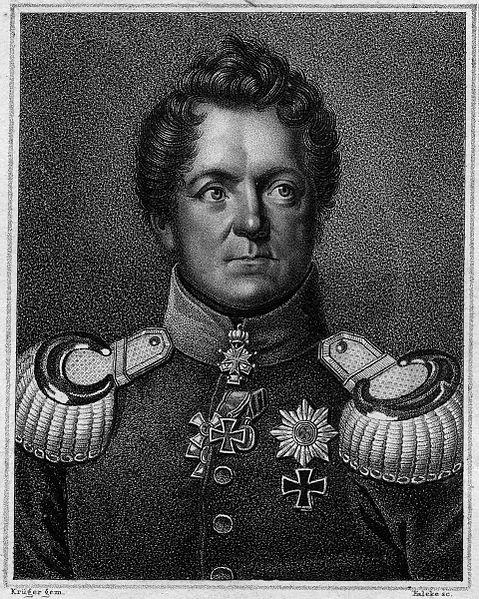
August Wilhelm Antonius Graf Neidhardt von Gneisenau (27 October 1760 – 23 August 1831) was a Prussian field marshal. He was a prominent figure in the reform of the Prussian military and the War of Liberation.
Gneisenau was born at Schildau in the Electorate of Saxony. He was the son of a Saxon lieutenant of artillery, August William Neidhardt, and his wife Maria Eva Neidhardt, née Müller. He grew up in great poverty at Schildau, and subsequently at Würzburg and Erfurt. In 1777 he entered the University of Erfurt, but two years later joined an Austrian regiment quartered there. In 1782, taking the additional name of Gneisenau from some lost estates of his family in Austria, he entered as an officer the service of the Margrave of Bayreuth - Ansbach. With one of that prince's mercenary regiments in British pay, he saw active service and gained valuable experience in the American Revolutionary War. Returning in 1786, he applied for Prussian service, and King Frederick the Great gave him a commission as first lieutenant in the infantry.
Made Stabskapitän (Staff Captain) in 1790, Gneisenau
served in Poland from 1793 - 1794. Ten years of subsequent quiet
garrison life in Jauer enabled him to undertake wide ranging studies of
military and political history. In 1796 he married Caroline von
Kottwitz.
In 1806 Gneisenau served as one of Prince Hohenlohe's staff officers, fought at Saalfeld and Jena, and a little later commanded a provisional infantry brigade which fought under Lestocq in the Lithuanian campaign. Early in 1807, the Prussian Army sent Major von Gneisenau as commandant to Kolberg, which, though small and ill protected, with the additional assistance of Schill and Nettelbeck succeeded in holding out against Napoleonic forces until the Peace of Tilsit. The commandant received the highly prized Pour le Mérite and promotion to lieutenant colonel.
A wider sphere of work now opened to Gneisenau. As chief of engineers, and a member of the reorganizing committee, he played a great part, along with Scharnhorst, in the work of reconstructing the Prussian army. Though primarily devoted to the problem of military reorganization, he exercised considerable influence on the general policy of the Ministry as well. A colonel in 1809, he soon drew upon himself, by his energy, the suspicion of the dominant French, and Stein's fall (January 1809) was soon followed by Gneisenau's retirement. But, after visiting Austria, Imperial Russia, Sweden and England on secret missions, he returned to Berlin and resumed his place as a leader of the patriotic party.
In open military work and secret machinations his energy and patriotism were equally tested, and with the outbreak of the Wars of Liberation, Major General Gneisenau became Blücher's quartermaster general. Thus began the connection between these two soldiers which has furnished military history with one of the best examples of the harmonious co-operation between a commander and his chief - of - staff. With Blücher, Gneisenau served in the capture of Paris; his military character perfectly complemented Blücher's, and under this happy guidance the young troops of Prussia, often defeated but never discouraged, fought their way into the heart of France. The plan for the march on Paris, which led directly to the fall of Napoleon, was specifically the work of the chief - of - staff. In reward for his distinguished service, Gneisenau in 1814 — along with Yorck, Kleist and Bülow — was elevated to count, while at the same time Blücher became Prince of Wahlstatt.
In 1815, once more chief of Blücher's staff, Gneisenau played a very conspicuous part in the Waterloo campaign. Senior generals such as Yorck and Kleist had been set aside in order that the chief - of - staff should take command in case of need, and when on the field of Ligny the old field marshal was disabled, Gneisenau assumed command of the Prussian army. He rallied the army, directed it towards Wavre from where part of it marched to join Wellington at the Battle of Waterloo on 18 June 1815, where the flanking attack by the Prussians helped to decide the battle.
On the field of Waterloo, Gneisenau carried out a pursuit that
resulted in the capture of Napoleon's carriage. In the days following
the battle, Gneisenau saw that the Prussian forces reached Paris before
Wellington. In reward Gneisenau gained further promotion and the Order of the Black Eagle.
In 1816 Gneisenau was appointed to command the VIII Prussian Corps, but soon retired from the service, both because of ill health and for political reasons.
For two years Gneisenau lived in retirement at his estate,
Erdmannsdorf in Silesia, but in 1818 he became governor of Berlin, as
successor to Kalckreuth,
and member of the Staatsrath (Council of State). In 1825 he was
promoted to General Field Marshal. In 1831, soon after the outbreak of
the Polish insurrection of 1830, he was appointed to the command of the
Army of Observation on the Polish frontier, with Clausewitz as his chief
- of - staff. At Posen he was struck down by cholera and died on 24
August 1831, soon followed by his chief - of - staff, who fell a victim
to the same disease in November.
As a soldier, Gneisenau proved the greatest Prussian general since Frederick the Great. As a man, his noble character and virtuous life secured him the affection and reverence not only of his superiors and subordinates in the service, but of the whole Prussian nation. A statue by Christian Daniel Rauch was erected in Berlin in 1855, and in memory of the siege of 1807, the Kolberg grenadier regiment received his name in 1889. One of his sons led a brigade of the VIII Army Corps in the Franco - Prussian War in 1870.
Several German navy ships, including the World War I armored cruiser SMS Gneisenau, the World War II battleship Gneisenau, and a post - war frigate were named after him.
Additionally, several German cities have streets named "Gneisenaustrasse" (Gneisenau Street), including Berlin (which has an U-bahn stop in his name), Leipzig, Hamburg and Heidelberg.